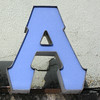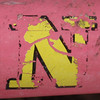Friday, November 6, 2009
Thing #20
Google Docs. Here is an example of how I would like to use Google Docs. This is a schedule another teacher and I made up for how to share a site license for SuccessMaker. Instead of tracking each other down around the campus and waiting for that one 45 block of time we're each available during the day, we could simply each access the document from Google Docs when we each had the time. I also think this would be fantastic for grade level notes home. One teacher could type the note. The others could edit and revise the note from their own classrooms. Our bilingual teacher would have it at her fingertips to translate for her students' parents. I spent some time playing around with the presentation feature in Google Docs. I like to make slide shows or Promethean flipcharts for different lessons in my class. Then I often share them with the other members of my team. They could pull the presentation off of Google Docs to use in their own classrooms or edit ad add to the slideshow. Wouldn't that just be awesome? I found Google Docs extremely easy to use and not just because I have used it before. I would hope the other members of my grade level would be willing to try and use the website. I really didn't see that there was anything difficult about it.
Thing #7A
Google Sky. On Google Reader I came across an article for Google Sky. I have used Google Earth, but hadn't even heard of Google Sky. Google Sky can be accessed by downloading Google Earth 4.3 or straight from your web browser at sky.google.com. I used it straight from the website instead of trying to reload Google Earth on my computer. Google Sky offers an interactive panoramic view of several parts of the sky: the planets, the constellations, the galaxies, a hubble showcase feature, a Chandra-X showcase feature, and podcasts. I really enjoyed the information about the moon. You can look at the surface features of the moon, track the different landing places and mission objectives from the Apollo landings, look at the surface using an elevation map, and watch videos from the Apollo missions. I also spent some time playing with the constellation feature. I can never see those things in the sky, but Google Sky shows their location on the panoramic view of the sky and traces them out. I can definitely see many educational uses for Google Sky. I am going to introduce it to one of our fifth grade teachers.
Thursday, November 5, 2009
Summarizing
Wow! Was that only 23 things? It seemed like I got more out of this than just 23. What a mind-boggling journey of technological experiences! I'm exhausted! I looked back over the 23 things to decide which ones were my favorites, and I made quite a long list! I know I will be getting pictures off Flickr for use in my classroom. I like the slideshow capabilities of Pikistrips and Rockyou to add an element of fun to classroom learning. I added the latest resources rss from Promethean Planet to my Google Reader account. Now when new resources are added to the Promethean website, I will know more readily. One of the favorite things I came across during this exploration was the organization Teachers Without Borders. This came across my Google Reader account from a link to Infinite Learning. I encourage you to visit their website and learn about this extraordinary group of educators.
Thing #23
I thought Classroom 2.0 was a little difficult to maneuver around on. It took me a few minutes longer than I wanted to find my way around. I did join a group of teachers with smart boards and a group of Mac users. I didn't see much merit to the videos on the website, except that it is a place for me to upload podcasts that my students have made. Maybe I need to search around some more. I think blogging with other teachers about ideas to use in the classroom is the obvious and most beneficial part of classroom 2.0.
The 23Thingsters group of Ning is a good way for techies in our district to communicate and share good ideas--especially uses for the sites we've visited on our 23 thing journey.
The 23Thingsters group of Ning is a good way for techies in our district to communicate and share good ideas--especially uses for the sites we've visited on our 23 thing journey.
Thing #22
Facebook. I joined Facebook about two years ago when our librarian, Elizabeth, was taking 23 Things. She thought the website was so much fun, and she wanted me to get on and explore it also. Since then I am an avid fan of Facebook. I have over 200 Facebook friends, and I have been able to connect with quite a few friends from high school and college. I am totally addicted and spend way too much time on Facebook everyday. During the summer I was on Facebook more than I was off. Most of the teachers at our school are on Facebook. We talk back and forth all evening.
I'm not sure there are any real educational aspects to Facebook. I don't think any of my current students have Facebook accounts. I don't let former students who are not out of high school friend me on Facebook. I don't think friending my students on Facebook would be appropriate.
I also have a MySpace account, but I never use it. I think Facebook is geared more toward older people. People who want to keep a certain amount of dignity to their social websites.
I'm not sure there are any real educational aspects to Facebook. I don't think any of my current students have Facebook accounts. I don't let former students who are not out of high school friend me on Facebook. I don't think friending my students on Facebook would be appropriate.
I also have a MySpace account, but I never use it. I think Facebook is geared more toward older people. People who want to keep a certain amount of dignity to their social websites.
Thing #21
Google Extras. I, like most people, have already used many of the extras that Google has to offer. Several people of my family and friends have Picasa accounts. We share pictures back and forth quite a bit.
I have used Google Earth in class with my students quite a few times. Anytime a city, landmark, or landform comes up in class discussion, we stop and look it up on Google earth. I like to start in Mesquite and then type in the address we're looking for and let the program fly us around the earth to the location we're searching for. The kids get the biggest kick out of looking at their own houses or houses of their family members.
My favorite discovery on Thing #21 is Google books. As proclaimed in an earlier blog, I am a bookophile of the most devoted sort. How great is it to be able to read or preview a book right off the computer. As much as I love books, I don't want to buy a book if I'm not going to end up liking it. On Google books, I can read a book for free or read enough of it to decide if I want to go out and buy the book. And how about the back issues of Life magazine available on Google books. What a great source for pictures and information on historical events! That is just fantastic!
I have used Google Earth in class with my students quite a few times. Anytime a city, landmark, or landform comes up in class discussion, we stop and look it up on Google earth. I like to start in Mesquite and then type in the address we're looking for and let the program fly us around the earth to the location we're searching for. The kids get the biggest kick out of looking at their own houses or houses of their family members.
My favorite discovery on Thing #21 is Google books. As proclaimed in an earlier blog, I am a bookophile of the most devoted sort. How great is it to be able to read or preview a book right off the computer. As much as I love books, I don't want to buy a book if I'm not going to end up liking it. On Google books, I can read a book for free or read enough of it to decide if I want to go out and buy the book. And how about the back issues of Life magazine available on Google books. What a great source for pictures and information on historical events! That is just fantastic!
Wednesday, November 4, 2009
Thing #19
Fieldtrip Voicethread I made a slideshow using voicethread. At first I thought the website was going to be difficult to use. It didn't have a warm, fuzzy look about it. When I got into it, the program wasn't difficult to use at all. I mentioned in an earlier post that I have had some experience with podcasting using Garageband. I thought voicethread was far and away simplier to use than Garageband. My students wouldn't have any trouble using voicethread except that they have to have and email address to access the site. I like that other people can access the slideshows from voicethread and work on them. Overall, I was very pleased with voicethread. I like to take pictures of my students working on different science projects or working with math manipulatives or working cooperatively as a group. I make slideshows with them and play them back for the students when we have a minute or two here and there. I think the slideshows remind the students of what they have learned or experiences in the class. I'm thinking I could sign in to the website and upload the pictures. Then my students could get on and type in or voice in the comments. They would love that!
Thing #18
States of Matter
Simple Graphical Multiplication Trick
Coolest Farm Town Designs
Like most people who are Internet junkies, I have spent a fair amount of time on youtube already. I watch videos of America's Got Talent or American Idol when I miss an interesting episode on television. I watch quite a few of those youtube videos that people sent around on email: ventriloquists, funny pets, cute babies, etc. This summer I learned how to cut a deck of cards with one hand and shuffle like a dealer from videos on youtube. The faculty of my school even has a video on youtube: Range Rocks! The only problem I really have with youtube is that it's difficult to show videos from this website in class. I don't like to override the filter on the district's internet, so I've tried downloading a video and taking it to school on my flashdrive. Doesn't really work all that well.
I had never spent much time on teachertube until tonight. Overall I was disappointed with the quality of the videos that I looked at. Most of them had a very amateurish and home-made quality. I don't think my students would be very interested in watching a teacher stand in front of a dry erase board and explaining a concept. They could just watch me do that. I saw several videos that students had created. If the students read their texts fluently and with expression, the videos might have merit for the listeners. I realize that the students who create the videos are engaged in a worthwhile learning activity, but the videos need to be quality in order to have merit for the audience also. I am interested in doing some more searching around on the pictures on teachertube. Those pictures are all more of an academic nature and are "safe" for the classroom.
Simple Graphical Multiplication Trick
Coolest Farm Town Designs
Like most people who are Internet junkies, I have spent a fair amount of time on youtube already. I watch videos of America's Got Talent or American Idol when I miss an interesting episode on television. I watch quite a few of those youtube videos that people sent around on email: ventriloquists, funny pets, cute babies, etc. This summer I learned how to cut a deck of cards with one hand and shuffle like a dealer from videos on youtube. The faculty of my school even has a video on youtube: Range Rocks! The only problem I really have with youtube is that it's difficult to show videos from this website in class. I don't like to override the filter on the district's internet, so I've tried downloading a video and taking it to school on my flashdrive. Doesn't really work all that well.
I had never spent much time on teachertube until tonight. Overall I was disappointed with the quality of the videos that I looked at. Most of them had a very amateurish and home-made quality. I don't think my students would be very interested in watching a teacher stand in front of a dry erase board and explaining a concept. They could just watch me do that. I saw several videos that students had created. If the students read their texts fluently and with expression, the videos might have merit for the listeners. I realize that the students who create the videos are engaged in a worthwhile learning activity, but the videos need to be quality in order to have merit for the audience also. I am interested in doing some more searching around on the pictures on teachertube. Those pictures are all more of an academic nature and are "safe" for the classroom.
Tuesday, November 3, 2009
Thing #17
Podcasting. I have used podcasting in my classroom for a couple of years now since I took a Pay for Knowledge class on podcasting through our district offerings. My students illustrated and voiced several reader's theater scripts from novels we were reading and read some of their favorite poems on podcasts. I have always had my students use illustrations instead of photographs on their podcasts. We uploaded them to PowerMedia in the past. Now we upload them to my teacher webpage. My next venture in podcasting will be to record videos of my students talking and working through some math strategies (rounding, double-by-double multiplication). These podcasts an be uploaded to the class website for parents to view at night when they're helping their students with their homework.
Besides the time involved in creating podcasts, the only problem I have with them is that so few of my students have computers and Internet access at home. The students and parents who could most benefit from these educational podcasts don't have the means to view them. Alas, nothing is perfect.
Besides the time involved in creating podcasts, the only problem I have with them is that so few of my students have computers and Internet access at home. The students and parents who could most benefit from these educational podcasts don't have the means to view them. Alas, nothing is perfect.
Thing #16
LibraryThing I'll admit I was skeptical when i first started reading about Library Thing on the learning 2.0 - 23 Things website. "I get all the information I want on books by searching on Amazon.com," I thought to myself. After searching around for several minutes, I found that my initial assumption about LibraryThing was wrong. I really enjoyed using the website after I worked with it for several minutes. A self-proclaimed bookophile, I couldn't help but get swept away in the many offerings from this website. I typed in the name of a silly little vampire series I'm reading (not the Twilight books--I already read all of those) and was quickly taken to the author's page where all her books were listed with cover pictures. I was also able to see and better understand where two different strands of the vampire series branch off. Yes, I can see all of this on amazon.com, but not as easily. I really have to search through the findings on amazon to find which books is the first, second, etc., in a series. LibraryThings had it all laid out for me. I also liked the recommendations feature. I found several books that I am interested in reading just from the few minutes I spent searching the recommendations list.
I think the recommendations list and author's page would be of particular interest to students. Students, the age I teach, don't think about "reading through an author" like I do. They read one book by an author and think they have to move on to something completely different. I think they would like searching for an author they enjoyed and finding a comprehensive list of other titles by the same author.
I think the recommendations list and author's page would be of particular interest to students. Students, the age I teach, don't think about "reading through an author" like I do. They read one book by an author and think they have to move on to something completely different. I think they would like searching for an author they enjoyed and finding a comprehensive list of other titles by the same author.
Thing #15
Delicious. Visit my delicious account.
I had heard about delicious in the past, but I had never used it myself until tonight. I didn't realize the wealth of information that could be accessed so easily through this site. Being a gardening enthusiast, I started searching for different types of plants I am interested in. I was able to find quite a few really good sites about some more rare flowers by using very little effort.
After playing around with flowers that interest me, I decided to search for some things that would be of more use to me in my job. Reader's theater is a favorite classroom literacy activity of mine. Most of the time, I take a book my class is reading and type up the script myself. I don't have to tell you how long this takes--hours! (I know I should before reader's theater, site after site came right up. I was able to bookmark these and save them for later. How many times have I spent hours and hours searching for something on the web, finally found it, and then promptly forgotten the website? Too many to tell! I can see that delicious is the answer to this weary teacher's endless sorting through google searching looking for that "great website I found a few weeks ago".
I had heard about delicious in the past, but I had never used it myself until tonight. I didn't realize the wealth of information that could be accessed so easily through this site. Being a gardening enthusiast, I started searching for different types of plants I am interested in. I was able to find quite a few really good sites about some more rare flowers by using very little effort.
After playing around with flowers that interest me, I decided to search for some things that would be of more use to me in my job. Reader's theater is a favorite classroom literacy activity of mine. Most of the time, I take a book my class is reading and type up the script myself. I don't have to tell you how long this takes--hours! (I know I should before reader's theater, site after site came right up. I was able to bookmark these and save them for later. How many times have I spent hours and hours searching for something on the web, finally found it, and then promptly forgotten the website? Too many to tell! I can see that delicious is the answer to this weary teacher's endless sorting through google searching looking for that "great website I found a few weeks ago".
Thing #7B

Does this look like the door to the Teachers' Lounge at your school? Do you want it to? Would you like the experience of working in such a facility? Teachers Without Boarders, a Canadian-based teachers' organization, would like to make this door the place where you, a well-educated, highly trained, experienced professional, share your craft with your less-privileged colleagues across the world. According to Sharon Peters on her blog in Infinite Thinking Machine, "we rolled up our sleeves together and shared resources, methodologies and practices" with teachers from South Africa and Kenya. TWB strives to train fellow educators to improve their skills in working with students and teachers as well. Establishing teachers who are confident to deliver professional development among their own peers is a prime goal for this organization so training can continue and spread once the initial TWB team has returned home.
Besides joining Teachers Without Boarders and following your wanderlust to the far-reaches of the globe, you can help with a simple donation. TWB is collecting new or gently used technology (digital cameras, flashdrives, and laptops) to be given to newly trained teachers in poverty-stricken parts of the world. In July and August, Ms. Peters "will be returning to South Africa and Kenya as a team leader of ICT teachers who will facilitate workshops for educators ranging from newly appointed elearning specialists to teachers who have never touched a computer before."
What an outstanding organization! Who wants to go on one of these trips with me?
Thing #14
LetterPop The thing I chose to explore was LetterPop. It's a website for creating newsletters and flyers. It has hundreds of ready-made templates for you to use. It's completely a drag and drop website where you will be able to create very nice publications. I made a flyer to send home with my students showing off some pictures of our recent field trip to the Dallas World Aquarium. I was about to type in some text about our trip when I realized how simple the website was to use. This made me think that my students could easily make their own flyers and write about their experiences on the trip themselves. The flyer would have much more significance for the students if they created it themselves. I think I could put the pictures in my teacher dropbox, and the kids could access them.
Friday, October 30, 2009
Thing #13



These things are just F-U-N! I've spent way too long playing with these things the last couple of days. I made a couple of images with the sign maker and added them to my facebook page.
I can see using these things in class to spark interest on a topic or use as a reminder of an upcoming event or deadline. Students could use the comic strip generator to write the dialogue on a comic.
The Flickr tools could be used to make a mosiac of pictures on a specific topic.
Thing #12
Landform Slideshow
Landform Comicstrip
Ohhhhhh!!!!!!! I've used animoto before with pictures I've taken of my students doing various activities. I found that the quick little slideshows are a great way to fill a few extra minutes and review content at the same time. I found a website (I'll have to search for it again) that has songs about science concepts that I would play while the slideshows about our electricity or animal or whatever was playing. The kids would sing along and shout out what was going to happen in the experiments as the pictures went by. They really enjoyed the videos.
Aren't the slideshows and comic strips fun ways to teach or review content. Students are so entrenched in the technical age, that they are much more apt to watch a slideshow with constantly changing images rather than look with any depth at their textbooks.
Landform Comicstrip

Ohhhhhh!!!!!!! I've used animoto before with pictures I've taken of my students doing various activities. I found that the quick little slideshows are a great way to fill a few extra minutes and review content at the same time. I found a website (I'll have to search for it again) that has songs about science concepts that I would play while the slideshows about our electricity or animal or whatever was playing. The kids would sing along and shout out what was going to happen in the experiments as the pictures went by. They really enjoyed the videos.
Aren't the slideshows and comic strips fun ways to teach or review content. Students are so entrenched in the technical age, that they are much more apt to watch a slideshow with constantly changing images rather than look with any depth at their textbooks.
Thing #11

Looking for me? Try Santorini Island, Greece. Although I have had the great experiences to travel a good many places, I have not been to Greece. Thanks to gbastistini for the use of his picture from Flickr.
I am just IN LOVE with Flickr. As I mentioned in an earlier post, I think I am very good about stopping a lesson to find a picture or video to support my students understanding of vocabulary or concepts we are working on. Flickr simply provides this teacher with an unlimited source of images to help promote student learning.
I chose to search for pictures on landforms. Students have difficulty understanding some of the landforms that they only see drawing of in their social studies books. I am always trying to find actual pictures that show the landforms in a natural setting-not the contrived settings from students' textbooks.
I LOVE the idea of using pictures from Flickr to reiterate the meanings of vocabulary words. We learn four new words a week, and I make up the flipchart with the words for the gradelevel. So, now I will start including pictures and videos from Flickr or CC in the flipcharts.
Can't wait to use Flickr more. On a negative note, I did come across (quite accidentally) a few pictures with topless women. I was innocently searching for pictures of Greece, and some of those pictures came up. Moral of the lesson--don't search for pictures in front of the class. Prepare before class starts.
Monday, October 26, 2009
Thing #10
One area in which I excel as a teacher (if I can pat my own back a moment) is that I am always stopping at the point where comprehension breaks down for my students and looking up images or videos on the internet to bridge that gap in my students' learning. I spend a good deal of time typing storyteller dolls, funnel, delta, or a variety of words into the internet to find a picture or video that will explain the concept in a much more meaningful way than I can from just my own description. Using Creative Commons seems to be just right up my alley. I am excited about the idea of having a ready source of materials to help my students learn about concepts which are not easy to understand from reading about them in a textbook or TAKS passage. Once I learn to better wade through the website, I definitely see myself using Creative Commons with my students and in my teaching.
Sunday, October 25, 2009
Thing #9
Wiki Sandbox. I think wikis. As I said in an earlier post, this is not my first experience with wikis. I do think that they can quickly become a little cumbersome to use if I try to get too fancy with them. Students probably wouldn't have this trouble since they are fearless of technology, and most of the time have longer to sit and figure things out than adults do. I tried to add a Voki, but I couldn't get it to work right. I messed up my wiki page with all these code boxes that didn't work. Other than that, I like the wiki page. I would love do have a class wiki where every student can have their own page about themselves. Visit my wiki if you like: McFadden's Memo.
Thing #8
Wikis. I love them. I learned about them two summers ago during Intel training. We created our own wikis for that class, and I immediately showed my mother how do create one. She made one for each side of our family to post pictures, news and events.
I like the Room 15 Wiki!. It is one wiki with many different concepts: homework, parent help, student blogs, news and events, etc. What a great way to collect everything related to your classroom in one space. Can't you see the end of bombarding parents with hardcopies of classroom newsletters, notes, and such? What a beautiful thing!
Another wiki that really caught my attention was Salute to Seuss. Being a fourth grade class, I always read through the Tales of a Fourth Grade Nothing series by Judy Blume. Every year the students are completely enamored with the characters and the author. Many of the students will search out Ms. Blume's other books and read them through out the course of the year. I really like the idea of a wiki based on an author's study. We could all post to the wiki about the books we're reading in class, and students could post on their own about her other books they read on their own. Love the idea!
There were two math wikis that caught my attention: Math 12V Outcomes Portfolio and Primary Math. What a terrific way to know that students thoroughly understand their math concepts. I think students would have a real sense of urgency in learning their math if they knew they have to prove their learning to post to the wiki.
I like the Room 15 Wiki!. It is one wiki with many different concepts: homework, parent help, student blogs, news and events, etc. What a great way to collect everything related to your classroom in one space. Can't you see the end of bombarding parents with hardcopies of classroom newsletters, notes, and such? What a beautiful thing!
Another wiki that really caught my attention was Salute to Seuss. Being a fourth grade class, I always read through the Tales of a Fourth Grade Nothing series by Judy Blume. Every year the students are completely enamored with the characters and the author. Many of the students will search out Ms. Blume's other books and read them through out the course of the year. I really like the idea of a wiki based on an author's study. We could all post to the wiki about the books we're reading in class, and students could post on their own about her other books they read on their own. Love the idea!
There were two math wikis that caught my attention: Math 12V Outcomes Portfolio and Primary Math. What a terrific way to know that students thoroughly understand their math concepts. I think students would have a real sense of urgency in learning their math if they knew they have to prove their learning to post to the wiki.
Wednesday, October 21, 2009
Thing #7
Commenting on blogs. Not my favorite things. I fall utterly and completely into the category of "lurkers" on the web who read but never comment. I prefer to fly under the radar.
Students, though, will be disappointed if people don't respond to their blogs, so I think going over the guidelines mentioned in 10 Techniques to Get More Comments on Your Blog with students would be a good idea.
Darren Rowse writes in his blog article ProBlogger Comments Policy, "My advice to those commenting on blogs (not just mine) is that in a sense you’re visiting someone else’s home when you leave a comment. Comments have the ability to build up our tear down your reputation. They are a permanent record of who you are and what you stand for - so take care - be gracious - make sure they add value."
Students, though, will be disappointed if people don't respond to their blogs, so I think going over the guidelines mentioned in 10 Techniques to Get More Comments on Your Blog with students would be a good idea.
Darren Rowse writes in his blog article ProBlogger Comments Policy, "My advice to those commenting on blogs (not just mine) is that in a sense you’re visiting someone else’s home when you leave a comment. Comments have the ability to build up our tear down your reputation. They are a permanent record of who you are and what you stand for - so take care - be gracious - make sure they add value."
Thing #6
Cheryl Oakes wrote a blog on techlearning.com where she mentioned using SKYPE in the classroom. She said her school SKYPES in parents for conferences and students who are medically incapable of attending class. SKYPE--what an awesome tool for the classroom. Since SKYPE is free (and what principal doesn't like that price?)from SKYPE to SKYPE, think of the endless possibilities for an elementary school! We could bring in guest speakers live from their own offices or workplaces. We could use this for anything from science experiments to a study on careers. My mind boggles at the ideas. No permission slips. No bus schedules. No leaving the classroom. Instead, the world could be piped into to us live!
Tuesday, October 20, 2009
Thing #5
"I just don't like technology." How many times have we heard that from our colleagues? Not to step on any toes, and I am no spring chicken myself, but generally this is the kind of grumbling heard from our more "experienced" colleagues who did not grow up with with computers as a part of their everyday lives. "Young" teachers don't remember a time when they didn't have computers in their homes or schools. A school day for them without a computer would be the equivalent of an "experienced" teacher surviving the same school day without a chair. Technology has become just that fundamental to peoples' everyday lives.
Lisa Thumann makes the comment in her blog that we all expect our doctor's be to up-to-date on the latest trends, techniques, and practices for their practices. Shouldn't we expect the same for teachers, especially when we are the teachers?
Ms. Thumann quotes a student from a video entitled No Future in Left Behind by Marianne Malstrom and Peggy Sheehy. The student says, "I can't create my future with the tools of your past". Doesn't that just say it all?? Anybody want to move into a house with last century's latest innovations? Anybody want a doctor prescribing treatment that was breakthrough technology in 1950?
This is where subscribing to educational blogs on a reader can be helpful. We can have the latest and greatest practices for technology in education dropped right into our reader. No searching or surfing involved. Let those techsavy youngesters and innovators feed their tried and true strategies for using technology right into your Google account.
I am very interested in the techlearning website and blogs. I like using Google reader to shotput techlearning's newest ideas right to the forefront of my reader page.
>
Lisa Thumann makes the comment in her blog that we all expect our doctor's be to up-to-date on the latest trends, techniques, and practices for their practices. Shouldn't we expect the same for teachers, especially when we are the teachers?
Ms. Thumann quotes a student from a video entitled No Future in Left Behind by Marianne Malstrom and Peggy Sheehy. The student says, "I can't create my future with the tools of your past". Doesn't that just say it all?? Anybody want to move into a house with last century's latest innovations? Anybody want a doctor prescribing treatment that was breakthrough technology in 1950?
This is where subscribing to educational blogs on a reader can be helpful. We can have the latest and greatest practices for technology in education dropped right into our reader. No searching or surfing involved. Let those techsavy youngesters and innovators feed their tried and true strategies for using technology right into your Google account.
I am very interested in the techlearning website and blogs. I like using Google reader to shotput techlearning's newest ideas right to the forefront of my reader page.
>
Thing #4
A blog about blogging. I am completely onboard with allowing students to read blogs during SSR/DEAR time. I think that by allowing students to rotate through the computers in my classroom as we have independent reading time, the use of the computers themselves would be a selling feature for students who might not be as initially "in" to the idea of reading blogs. Once students got into reading them, I'm sure they would be completely engaged. I hope the time is coming in the near future to allow students the capability to respond to blogs. Blogs, by they very nature, call out for a response from the reader, don't they? Allowing students to read and comment would quickly imbed so many of the literacy skills teachers preach and pout about everyday. Students would, in my opinion, be drawn to the natural, friendly, conversational style of blogs. Without the constraints of formal writing, students would be more free to express their thoughts and ideas. I think students are often reluctant to put their true thoughts down on a paper to be handed in to the teacher for a grade. When everything students write is scrutinized and read by the teacher who "gives" the grades and communicates with parents, students just parrot back what the teacher wants instead of taking a risk. Risk might not always equal the grade they want or need. Blogs are free from all those restraints.
Wednesday, September 30, 2009
Thing #2 - Web 2.0
http://123.writeboard.com/165d0aec0d4a84615/v/new (password: andrea)
Confessions from a 20th Century Learner...
Totally excited about the concept of the writeboard. Obviously signed up for one to use as I made notes on the web 2.0 articles and videos. Set up whiteboard in a separate window. Ready to go. Went back to original window to read article and watch videos. Got interested in information from both and started making copious notes. Finished video and decided to go back to yet another open window to check facebook page. Doing this, noticed the empty writeboard. I had taken all my notes on a piece of paper with a pen. Old habits die hard and/or new habits are hard to be born.
Kids: game 3 1/2 hrs a week, watch tv 16 1/2 hrs a week, use computer 5 1/2 hrs a week
Parents email. Kids test, IM, blog
76% of teachers have never used wikis, blogs, podcasts
14% of teachers let students create with technology once a week. 63% never do.
We must engage these 21 century learners using technology that they are well versed in.
I understand the endless possibilities associated with using web for learning. Feeling mightly restrained by the mountain of district/state curriculum.
I struggle with what to leave out in order to put more "stuff" in--no matter how good the "stuff" is, there still has to be something subtracted when anything is added.
I am feeling conflicted about using the time to maintain a blog when so few of my students and their have computers at home.
Wondering the use in creating a wiki for students to use when they can't use the wiki because they don't have email accounts.
Totally onboard with podcasting (have already done it). Like the idea of using podcasts to demonstrate new math strategies.
Confessions from a 20th Century Learner...
Totally excited about the concept of the writeboard. Obviously signed up for one to use as I made notes on the web 2.0 articles and videos. Set up whiteboard in a separate window. Ready to go. Went back to original window to read article and watch videos. Got interested in information from both and started making copious notes. Finished video and decided to go back to yet another open window to check facebook page. Doing this, noticed the empty writeboard. I had taken all my notes on a piece of paper with a pen. Old habits die hard and/or new habits are hard to be born.
Kids: game 3 1/2 hrs a week, watch tv 16 1/2 hrs a week, use computer 5 1/2 hrs a week
Parents email. Kids test, IM, blog
76% of teachers have never used wikis, blogs, podcasts
14% of teachers let students create with technology once a week. 63% never do.
We must engage these 21 century learners using technology that they are well versed in.
I understand the endless possibilities associated with using web for learning. Feeling mightly restrained by the mountain of district/state curriculum.
I struggle with what to leave out in order to put more "stuff" in--no matter how good the "stuff" is, there still has to be something subtracted when anything is added.
I am feeling conflicted about using the time to maintain a blog when so few of my students and their have computers at home.
Wondering the use in creating a wiki for students to use when they can't use the wiki because they don't have email accounts.
Totally onboard with podcasting (have already done it). Like the idea of using podcasts to demonstrate new math strategies.
Thursday, September 24, 2009
Thing #1 - 7 1/2 Habits of Successful Lifelong Learners
All of my life I have been witness to a person who embodies the very essence of and must be the the living definition for a successful lifelong learner: my mother. She is constantly learning new things and equipping herself with new strategies and skills. Her lift of hobbies is long and widely varied. My sister and I were long ago engrained with the notion that there is an infinite amount of learning and knowledge to be gained. This was not a formal lesson taught around the family dinner table but an informal lesson lived out by example each day. While my mother does indeed practice the 7 1/2 habits mentioned, I think the catalyst for her learning in her innate and insatiable natural curiosity. I have been able to nurture and value my own curiosity having had the good fortune to watch my mother live as a successful lifelong learner following her own curiosity.
The most challenging of the 7 1/2 habits for me is viewing problems as challenges. Problems/challenges=same difference. In my mind, the word challenge has the same negative connotation that the word problem does. Instead of challenge, I'll have to save I will view problems as learning experiences. A rose by any other name.....yada, yada, yada.
The easiest will be using technology to my advantage. I genuinely like technology and am fairly well versed in most of it. Computers have not always been a part of my life, but I have spent enough time with them to have made up for the lost years.
Playing if the habit I think is the most important but most overlooked, at least by me. I think I work too much and place too much of an importance on it. I need to step back from my self-imposed obligations and let myself play more. Got to bend before you break.
Come on Web 2.0-23 Things. What do you have in store for me?
Subscribe to:
Posts (Atom)




















